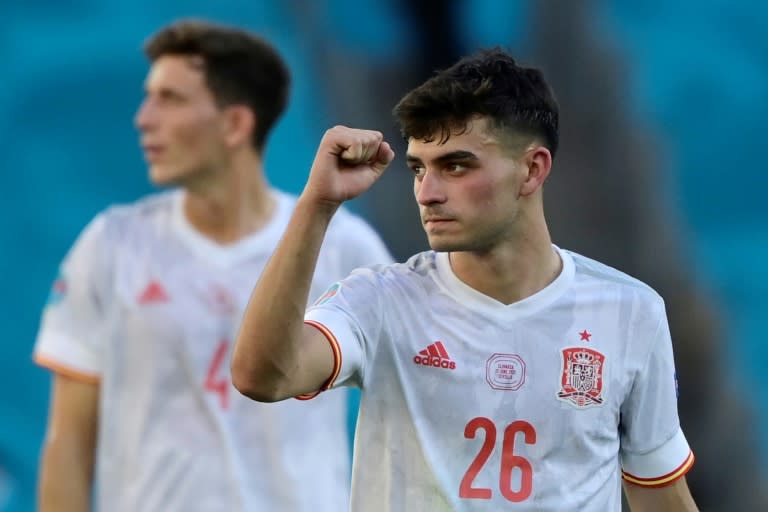„Dvojitá hra?“ Cez Orbánovo Maďarsko prechádzajú migranti

Hont (Maďarsko) (AFP) – Maďarský premiér Viktor Orbán hovorí, že „chráni Európu pred vlnou migrantov“.
Zverejnené dňa:
3 minúty
Čokoládové obaly a fľaše s vodou, ktoré zostali okolo popola požiarov na hraniciach so susedným Slovenskom, však popierajú Orbánovu chválu, že funguje „iba maďarský model“ riešenia problému.
Väčšina susedov krajiny z EÚ obnovila hraničné kontroly s Maďarskom – Slovensko a Slovinsko za posledných 10 dní prijali mimoriadne opatrenia – keďže počet migrantov prechádzajúcich krajinou prudko vzrástol.
Len v septembri ich slovenské úrady zaregistrovali 13-tisíc, čo je viac ako za celý minulý rok.
V maďarskej pohraničnej dedine Hont občianska obrankyňa Viktoria Teknosová pre agentúru AFP povedala, že miestni si „držia odstup“ od ľudí, ktorých opustili „prevádzači, ktorí utekajú k hraniciam“.
„Niektorí nechodia na túry v blízkosti riek alebo lesov, pretože sa obávajú stretnutia s migrantmi,“ dodal.
Viacerí v posledných mesiacoch prekročili hranicu a Csaba, slovenský dobrovoľník, ktorý pomáha registrovať žiadateľov o azyl na druhej strane, sám seba označil za „pastiera migrantov“.
Väčšina však „chce ísť do Nemecka, pretože ich rodinní príslušníci alebo priatelia sú tam už“, povedala Katarína Levčíková zo slovenskej humanitárnej skupiny Marina.
Niektorí slovenskí politici, vrátane etnického Maďara, obvinili Budapešť, že úmyselne umožnila migrantom nerušene prekročiť hranice.
Prepustenie obchodníkov s ľuďmi
Začiatkom tohto roka Maďarsko rozhnevalo Rakúsko a vyzvalo Európsku komisiu, keď sa rozhodla „ušetriť peniaze“ prepustením odsúdených pašerákov ľudí narodených v zahraničí z väzenia.
Podľa najnovších údajov maďarského národného veliteľstva väzenských služieb zaslaných agentúre AFP bolo doteraz prepustených viac ako 1500 ľudí a dostali tri dni na to, aby opustili krajinu.

EÚ uviedla, že sa nekontrolovalo, či oslobodení pašeráci skutočne opustili krajinu.
Orbán však nasledoval tvrdý postoj Maďarska k prisťahovalectvu a počas vrcholiacej migračnej krízy v roku 2015 postavil pozdĺž svojej južnej hranice plot z žiletkového drôtu, vďaka čomu tam utečenci takmer znemožnili získať azyl.
Len 10 získalo minulý rok v Maďarsku štatút utečenca, čo odsúdilo najvyšší súd EÚ.
„Postavili sme plot aj právne bariéry, aby sme zabránili teroristickej hrozbe, ktorá by si vyžiadala migráciu z Maďarska,“ povedal Orbán v nedávnom rozhlasovom prejave.
Kritici však Orbána obviňujú z toho, že hrá dvojitú hru – nechal ľudí prekĺznuť po krajine a zároveň obviňovali EÚ zo zlyhania pri kontrole migrácie.
Nemecko sa dostáva pod tlak s viac ako 250 000 žiadosťami o azyl za prvých osem mesiacov tohto roka – viac ako v celom roku 2022.
‚Vráť sa o týždeň‘
„Je v záujme vlády uľahčiť žiadateľom o azyl dostať sa do Maďarska,“ povedal Rudolf Bergs, analytik budapeštianskeho think-tanku Political Capital.

„Môže ich použiť ako politickú páku pri rokovaniach o EÚ alebo v slovenských voľbách,“ dodal Berks, „alebo v slovenských voľbách“, ktoré vyhral Orbánov spojenec Robert Figo, ktorý spečatil koaličnú dohodu o zostavení vlády.
Orbán aj Fico spolu so spoločnými protiimigrantskými a protimoslimskými postojmi udržiavajú vzťahy s ruským prezidentom Vladimirom Putinom a zdráhajú sa posielať Ukrajine vojenskú pomoc.
K severnej hranici Maďarska so Slovenskom však migranti naďalej prúdia.
Po ceste z Hondu nemá starosta Tregelipalangu David Rico konca kraja.
Argumentoval, že opakované snahy Maďarska zatlačiť migrantov späť do Srbska – napriek tomu, že ich Európsky súdny dvor v roku 2020 označil za nezákonné – nefungovali.
„Vidíme, že ľudia, ktorých chytia a odvezú (na južnú hranicu), sa do týždňa vrátia,“ povedal.
© 2023 AFP

Jedlo blbeček. Introvert. Spisovateľ. Profesionálny tvorca. Príjemný praktizujúci pri alkohole. Extrémny webový expert.


/cloudfront-us-east-2.images.arcpublishing.com/reuters/B6IEFABFSJLOVOXFB7BMYY5OFE.jpg)
